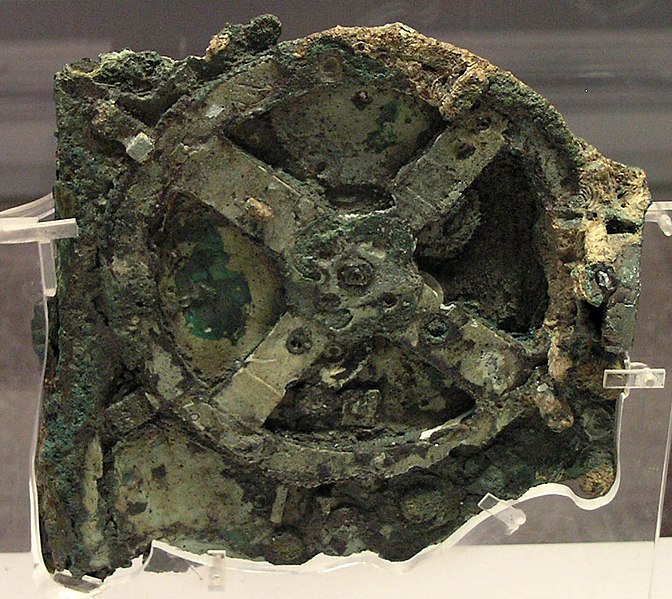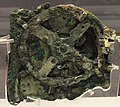ไฟล์:NAMA Machine d'Anticythère 1.jpg

ขนาดของตัวอย่างนี้: 672 × 599 พิกเซล ความละเอียดอื่น: 269 × 240 พิกเซล | 538 × 480 พิกเซล | 861 × 768 พิกเซล | 1,036 × 924 พิกเซล
ดูภาพที่มีความละเอียดสูงกว่า (1,036 × 924 พิกเซล, ขนาดไฟล์: 207 กิโลไบต์, ชนิดไมม์: image/jpeg)
ประวัติไฟล์
คลิกวันที่/เวลาเพื่อดูไฟล์ที่ปรากฏในขณะนั้น
| วันที่/เวลา | รูปย่อ | ขนาด | ผู้ใช้ | ความเห็น | |
|---|---|---|---|---|---|
| ปัจจุบัน | 17:48, 20 ธันวาคม 2548 |  | 1,036 × 924 (207 กิโลไบต์) | Marsyas | Fragment principal de la machine d'Anticythère. Le mécanisme consiste en un système complexe de 32 roues et plaques portant des inscriptions relatives aux signes du zodiac et aux mois. L'étude des fragments suggère qu'il s'agissait d'une sorte d'astr |
หน้าที่มีภาพนี้
หน้าต่อไปนี้ โยงมาที่ภาพนี้:
การใช้ไฟล์ข้ามโครงการ
วิกิอื่นต่อไปนี้ใช้ไฟล์นี้:
- การใช้บน ab.wikipedia.org
- การใช้บน af.wikipedia.org
- การใช้บน als.wikipedia.org
- การใช้บน ang.wikipedia.org
- การใช้บน anp.wikipedia.org
- การใช้บน an.wikipedia.org
- การใช้บน ar.wikipedia.org
- การใช้บน ast.wikipedia.org
- การใช้บน azb.wikipedia.org
- การใช้บน az.wikipedia.org
- การใช้บน bcl.wikipedia.org
- การใช้บน be-tarask.wikipedia.org
- การใช้บน be.wikipedia.org
- การใช้บน bg.wikipedia.org
- การใช้บน bn.wikipedia.org
- การใช้บน bs.wikipedia.org
- การใช้บน ca.wikipedia.org
- การใช้บน ce.wikipedia.org
- การใช้บน cs.wikipedia.org
- การใช้บน cv.wikipedia.org
ดูการใช้ข้ามโครงการเพิ่มเติมของไฟล์นี้
